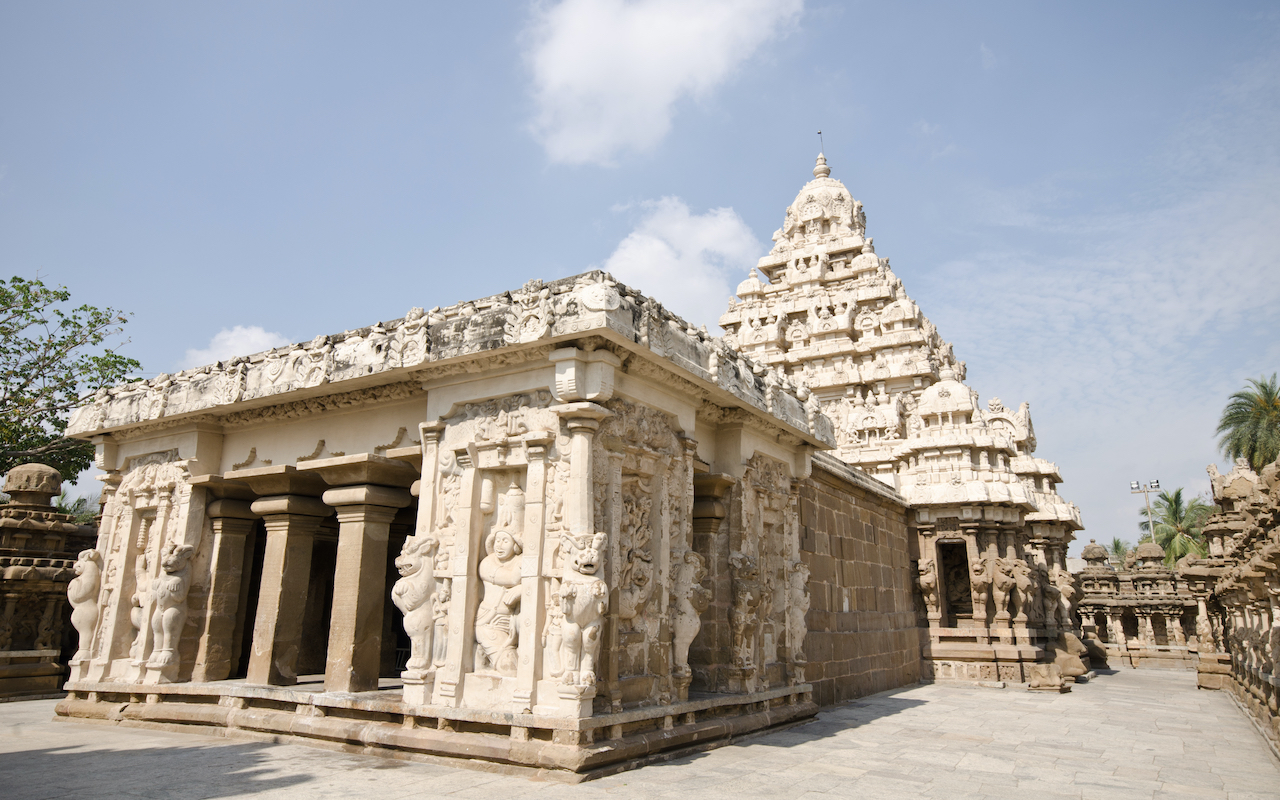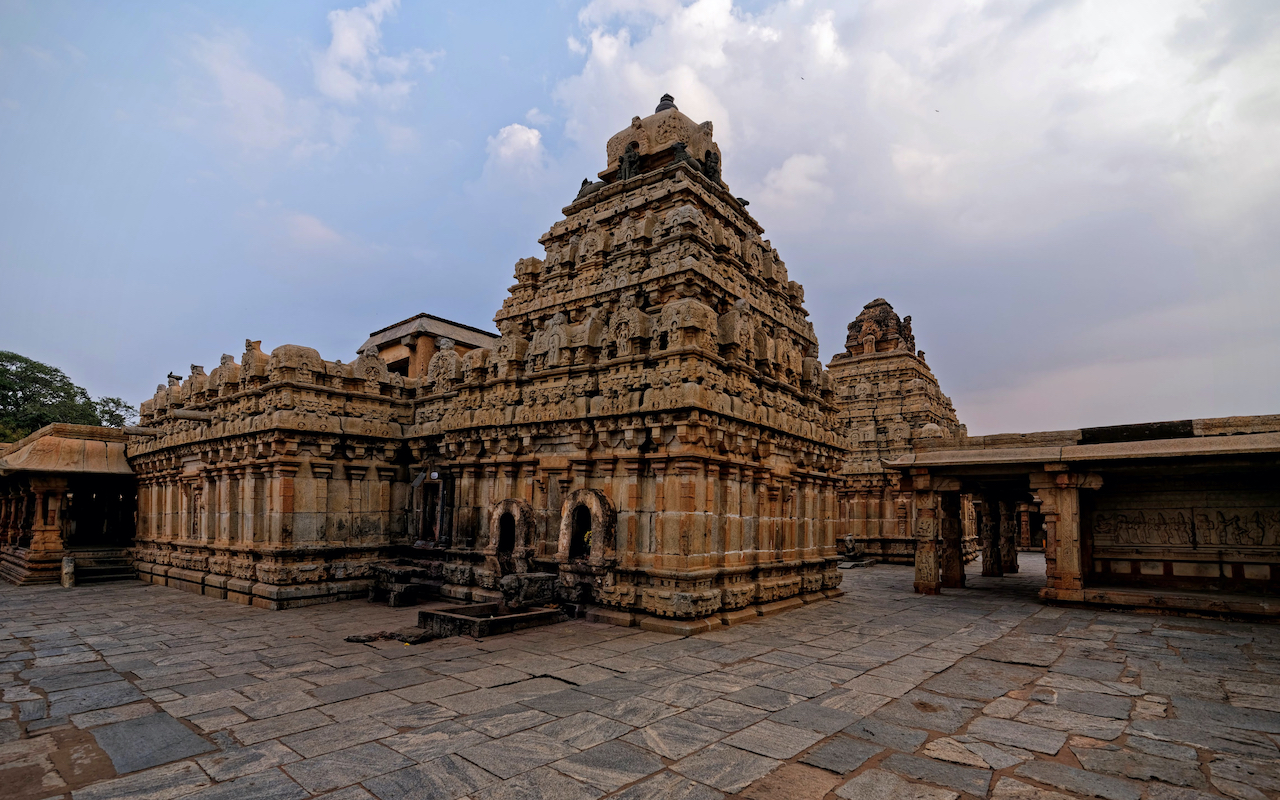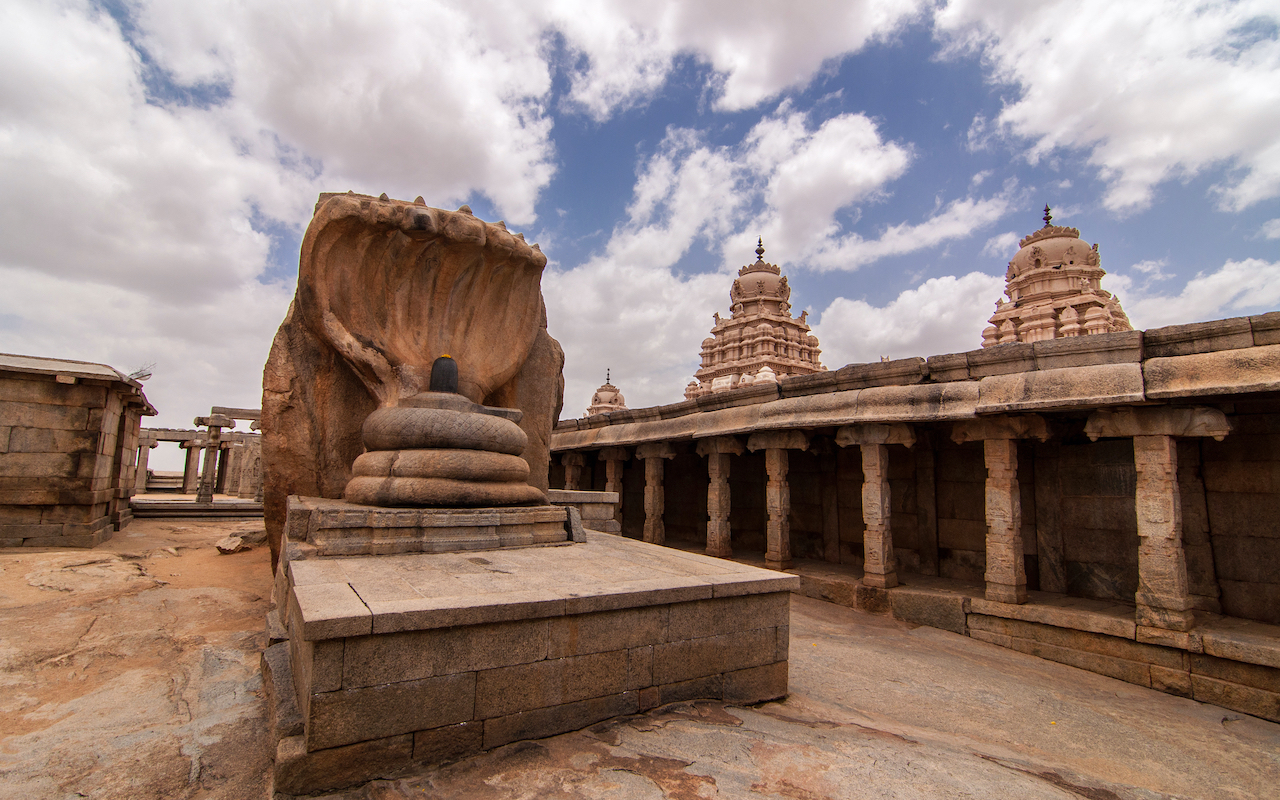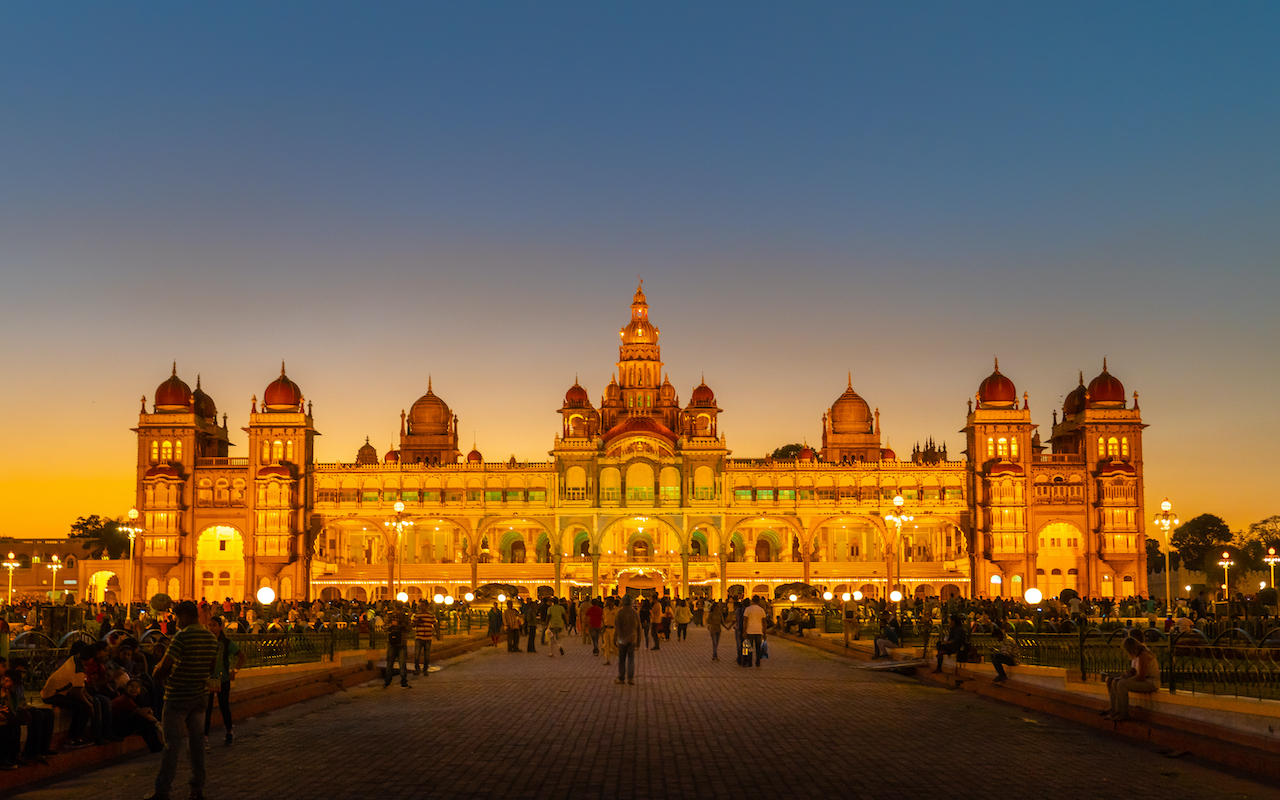A land of spell-binding history, unique diversity and rich culture, India is littered with temples and monuments of historical importance – some as old as a few thousand years. Of particular note are the structures you’ll find in South India: a heady mix of pastel-hued churches, stunning temples and buildings boasting amazing acoustics dot this region, adding to its dynamic character and compelling visual identity. Here are a few worth checking out.

1. Kailasanathar Temple
Located in Kanchipuram, the Kailasanathar Temple is one of the earliest stone temples to have been constructed in South India, and almost every surface is covered with statues and carvings. The rectangular complex is dedicated to the Hindu god Shiva and was built by King Narasimhavarman II of the Pallava dynasty between the 7th and 8th century. Legend has it that its sheer beauty stopped invaders, who were stunned by its magnificence, from destroying it centuries ago.
The structure’s highlight is a 16-sided granite Shiva linga (cylindrical idol) in the main temple, built in the Dravidian architectural style with a granite foundation and an ornate pyramidal sandstone vimana (tower) surrounded by nine smaller shrines. Be sure not to miss the perfectly chiselled mythical Yali (half-human and half-lion) figurines that stand tall on their hind legs and adorn the outer walls of the temple – a hallmark of the Pallava architecture style that focused on grandeur and majesty.
Add: Pillaiyarpalayam, Kanchipuram, Tamil Nadu

2. Bhoga Nandeeshwara Temple
Located at the base of Nandi Hills – roughly 60km from Bengaluru – this temple was first constructed during the Bana dynasty in the 9th century and is dedicated to the Hindu god Shiva. The complex was subsequently extended over the years, with structural additions being made by ruling parties of succeeding dynasties, from the Cholas to the Hoysalas and the Vijayanagara rulers.
It’s no wonder then that the temple – which is one of the oldest existing temples in the state of Karnataka – sports a mix of architectural styles. The intricate carvings on soap-stone pillars; sculptures of various gods; the Instagram-worthy temple tank of Shringi Theertha and the depiction of Lord Shiva through various life stages inside the temples are all not to be missed.
Add: SH 74, Nandi, Karnataka

3. Golconda Fort
Overlooking pastoral land, the Golconda Fort was constructed by the Kakatiya dynasty in the 13th century. This citadel was later captured by the Bahmanis, followed by the Qutub Shahis (the founders of Hyderabad city) and ultimately by the Mughal emperor Aurangzeb. Each dynasty added various structures to make it the present-day Golconda Fort complex of Hyderabad. Due to its vicinity to diamond mines, it was also once a hub for diamond trade.
It was under the Qutub Shah dynasty that the majestic fort saw its glory days, as it was further fortified with massive gates studded with iron spikes to stop elephant-mounted enemies from breaking them down; a concealed water pipeline ensuring uninterrupted water supply in case of sieges; and a handful of drawbridges. The ingenious acoustics of the fort also ensured that even the slightest sound from the entry gates would echo across the complex, alerting the guards perched at the top of possible intruders. Be sure to also check out the gorgeous Nagina Bagh garden.
Add: Khair Complex, Ibrahim Bagh, Hyderabad

4. Veerabhadra Temple
Located a little less than 123km from Bengaluru in the village of Lepakshi in Andhra Pradesh, the 16th-century Veerabhadra Swamy temple was built by the erstwhile Vijayanagar rulers. Perched on a tortoise-shaped, low, rocky hill and guarded by a granite bull, the temple is grandeur and poetry in stone, sporting exquisite sculptures, rare frescoes and finely chiselled carvings.
One of the most fascinating aspects of this temple is the mystery of the “hanging pillar”. Among the 70 pillars in the temple, it’s the only one that hangs suspended from the ceiling without touching the temple floor, mystifying many, including a British engineer who tried (and failed) to rectify it.
Other mythical mysteries can be found within the temple complex, such as giant footprints believed to made by a Hindu god; giant carved plates on rocks; a granite cobra made of a single stone that could not have been made with the tools of the time; and crimson marks on a wall that supposedly oozes blood.
Add: Lepakshi, Andhra Pradesh

5. Mysore Palace
Mysore Palace, also known as Amba Vilas Palace, is the former palace of the royal family of Mysore, the Wadiyar dynasty, who ruled there from 1399 to 1950. Located around 143km from Bengaluru, it was a petite wooden structure in an earlier 14th-century avatar. After a massive fire in the late 19th century, it was rebuilt as a new palace within the premises of the Old Fort facing the Chamundi Hills.
Designed by the architect Henry Irwin and completed in 1912, the current Mysore Palace is an Indo-Saracenic, three-storied granite structure with pink marble domes, several expansive arches, a large garden and a striking five-storey tower. Infused with design elements from Indian, Islamic and Neoclassical architecture, this beautiful palace is now a museum and monument, drawing millions of tourists every year. Other key features not to be missed are the embellished Durbar Hall, finely engraved mahogany ceilings and various original Indian paintings.
Add: Sayyaji Rao Road, Mysuru, Karnataka

6. Matrimandir
Matrimandir is a non-denominational meditation and yoga centre dedicated to spiritual care. Located some 163km from Chennai, the structure is striking at first sight. A magnificent glittering golden sphere unlike anything ever seen greets visitors as they approach it. The well-manicured space on which it sits includes gardens and an amphitheatre, and the sphere is surrounded by 12 lotus petal-like structures. A pair of spiral ramps leads guests to the chamber within the structure – a wide space with white pillars, floors and walls, where you’ll find a crystal globe, which serves as the focus for meditation sessions.
Dubbed the “soul of the city” by the residents of Auroville and set in an open space aptly termed the Peace Area, Matrimandir – which means “the dwelling place of the Mother” – was designed by French architect Roger Anger and took 37 years to complete. Entry is free, but a prior appointment is required.
Add: Auroville, Tamil Nadu
For information on whether the site is open, please visit their websites or check with their tourism boards.
SEE ALSO: 5 trendy spots to check out on KNK Road, Chennai
The post 6 architectural marvels to visit in South India appeared first on SilverKris.
from SilverKris
I generally check this kind of article and I found your article which is related to my interest. Genuinely it is good and instructive information. Thankful to you for sharing an article like this.new builds auckland
ReplyDeleteReally very detailed with pictures...reader's choice..
ReplyDeletebestbus